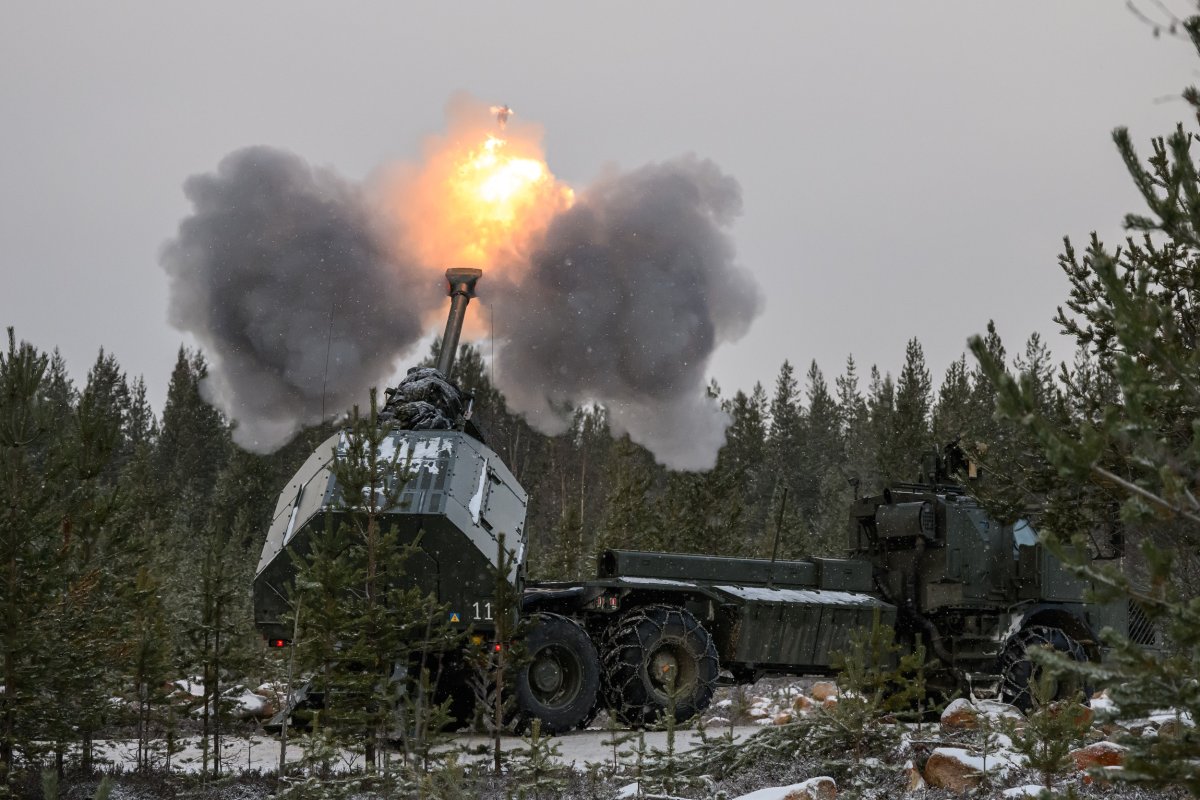🎙️ Voice is AI-generated. Inconsistencies may occur.
Europe would need to spend $1 trillion over the next quarter of a century to replace the capabilities and equipment currently provided by the United States on the continent, according to a security think tank.
The International Institute for Strategic Studies (IISS) estimated in a report that replacing American airpower would carry the heftiest price tags. The Trump administration has signaled it wants the U.S. to pivot away from the decades-long military support Washington has provided.
When contacted by Newsweek, the Pentagon said it does not discuss hypothetical situations.

Why It Matters
The Trump administration indicated it wants to shrink the U.S. footprint in Europe, including giving up America's hold on the role of NATO's Supreme Allied Commander Europe, also known as SACEUR.
The IISS report highlights the high costs European countries face in filling the security gap vacated by an American military downsizing on the continent, as well as the policy dilemmas posed by uncertainty over which capabilities the U.S. plans to withdraw.
What To Know
The London-based IISS said the aim of its assessment, released Wednesday night ET, and Thursday morning UK time, is to show the cost and defense industrial requirements for NATO-Europe to defend against a future Russian threat without the United States.
The assessment assumes that the war in Ukraine would have ended by mid-2025 with a ceasefire agreement and that the U.S. government had indicated it would start the process of withdrawing from NATO.
It examined a scenario in which the U.S. starts to remove personnel, equipment, stocks and supplies from Europe as it prioritizes the Indo-Pacific theater.
However, NATO's European members would face significant challenges if the US ceased its defense commitments to the continent, according to the IISS, especially as it assessed that Russia could reconstitute its ground forces by 2027 after a ceasefire in Ukraine.
The IISS found that the estimated costs for replacing U.S. equipment and capabilities in Europe over the next 25 years would amount to roughly $1 trillion, about one-fifth of which would need to be spent on 400 extra aircraft across Europe—a "tall order" when production lines are stretched.
Unlocking this funding would be possible, but would come with considerable challenges and require "radical approaches to defense spending closer to Cold War levels, where outlays of over 3 percent of GDP would be required.
Another 15 percent of this figure would be funneled into replacing 20 of the U.S.'s destroyers, the think tank added. Replacing 128,000 U.S. troops would cost more than $12 billion.
Rebuilding European defense capacity in the medium term is possible. If every European NATO state invests 2 percent of GDP in 2024, an additional $62 billion would be available for their armed forces, the IISS said.

Europe Uncertain Over What the U.S. Will Withdraw
The Trump administration has made it clear that the U.S. wants to pivot away from Europe, a continent it has militarily supported for decades since the end of the Cold War.
For years, the U.S. has shouldered expensive military burdens in Europe, including providing logistics, strategic lift, communication, intelligence and reconnaissance capabilities, as well as airborne electronic warfare and munitions stockpiles.
But a central European official involved in defense planning on the continent told Newsweek that the U.S. has still not produced a road map sketching out which capabilities Washington plans to withdraw from Europe and what the continent will have to urgently replace.
The U.S. has signaled it could take up to two years to evaluate which assets it wants to pull out of Europe, the official said. In an ideal world, a plan would be in place by the end of the year.
European political and military officials broadly acknowledge the continent's long-standing overreliance on the U.S., pledging to shore up the defense industry through investment hikes.

Industry sources say some progress has been made across Europe in placing orders, but the pace has been slower than expected. The focus has been on backfilling stockpiles of equipment sent to Ukraine.
Senator Roger Wicker and Representative Mike Rogers, the Republican chairs of the Senate and House Armed Services Committees, said in mid-March they were "very concerned" about rumblings that the Pentagon wanted to make "significant reductions to U.S. forces stationed abroad."
At the start of April, Rogers criticized "some mid-level bureaucrats" in the Pentagon who hold "misguided and dangerous views" on reeling in the U.S. presence in Europe.
The current SACEUR and the head of the U.S. European Command, General Christopher Cavoli, told lawmakers in April that he was "planning to keep" forces stationed in the main U.S. European bases where they are.
What People Are Saying
The International Institute for Strategic Studies (IISS): "Assuming a 25-year life cycle, the cost for European allies to replace the current U.S. contribution to the collective defence of NATO, would amount to approximately USD1 trillion."
A Pentagon spokesperson told Newsweek: "We don't discuss hypothetical situations."
What Happens Next
Financial Times reported in March that Europe's most significant military powers were putting together plans to take over much of the responsibility for protecting the continent. This includes a proposal to the White House for Europe to take the reins within the next decade.
However, it would take between five and 10 years of elevated defense spending before Europe would have its own set of capabilities to replace those currently provided by the U.S., excluding American nuclear weapons, the outlet said.
Update 5/15/25, 7:35 a.m. ET: This article has been updated with a response from the Pentagon.
About the writer
Ellie Cook is a Newsweek security and defense reporter based in London, U.K. Her work focuses largely on the Russia-Ukraine ... Read more




